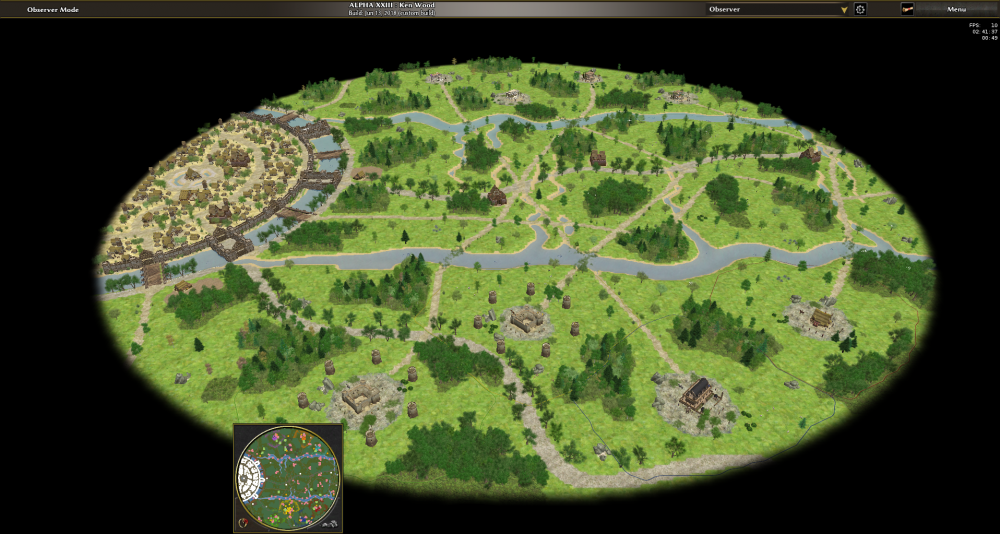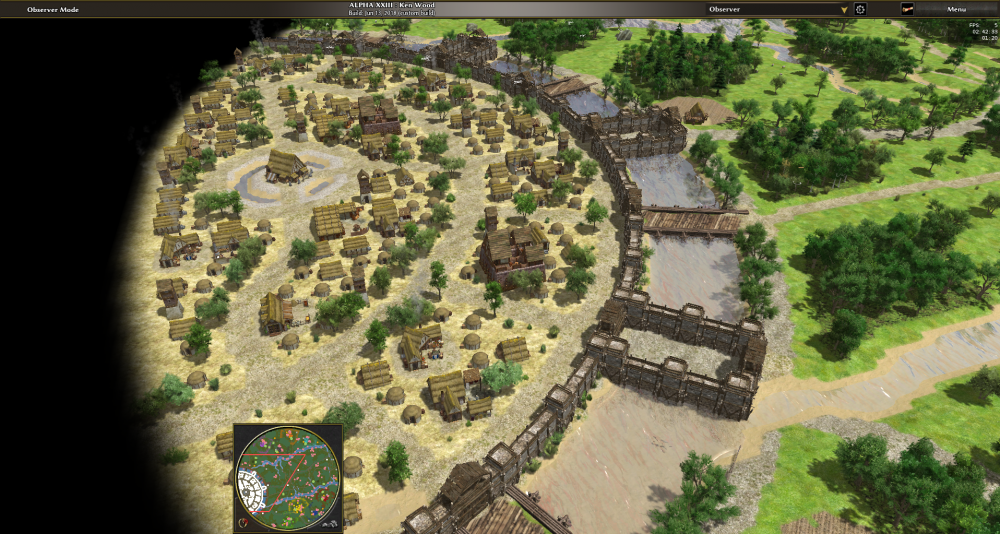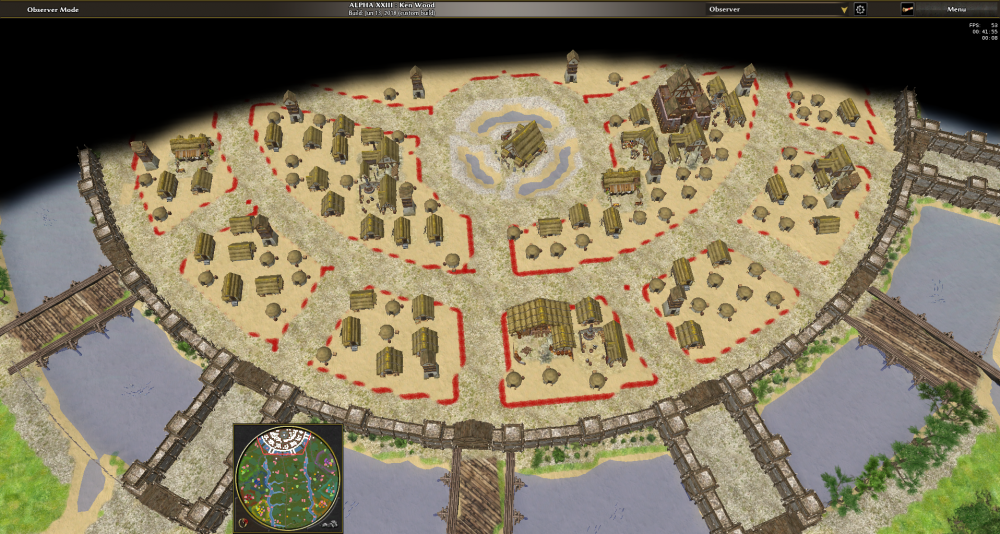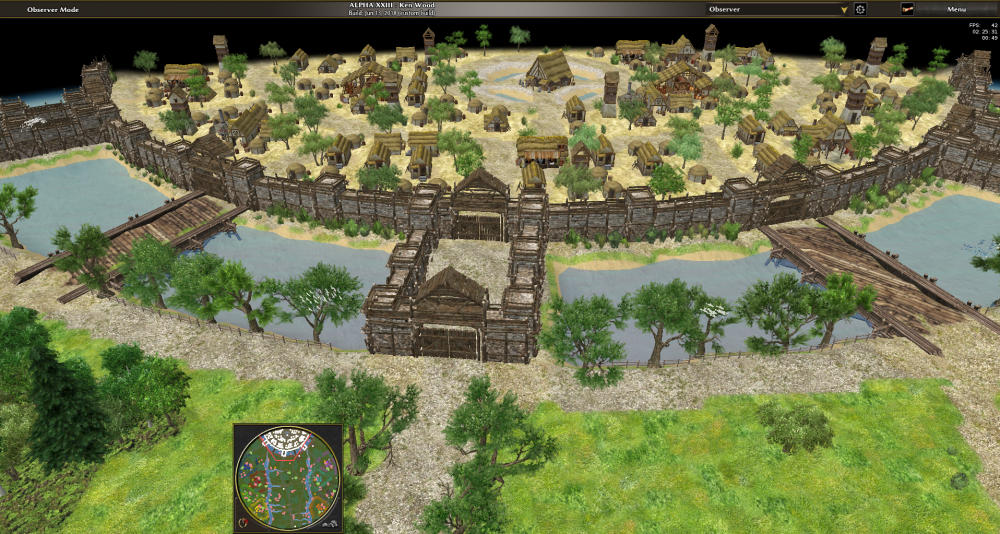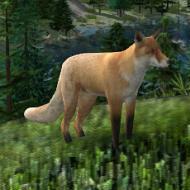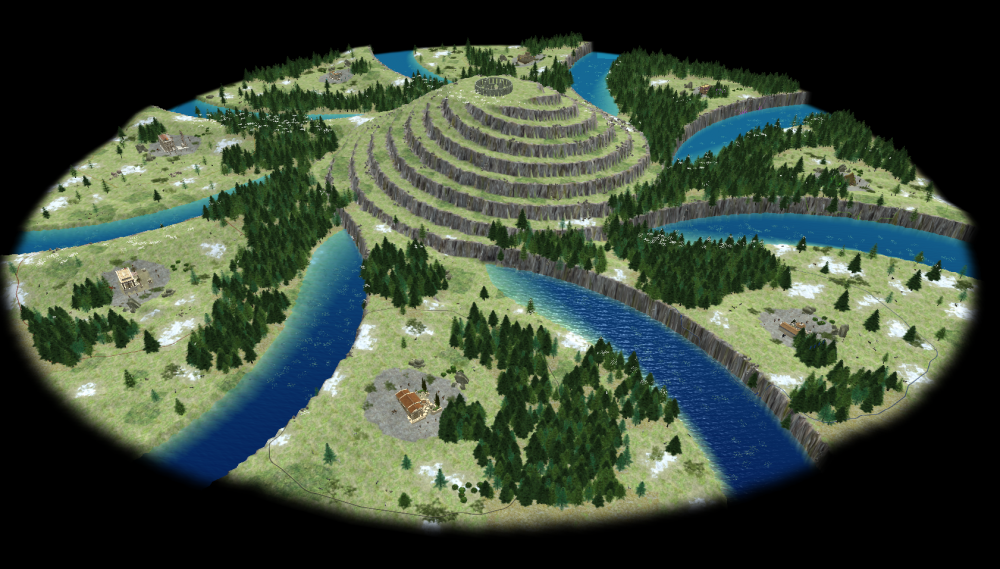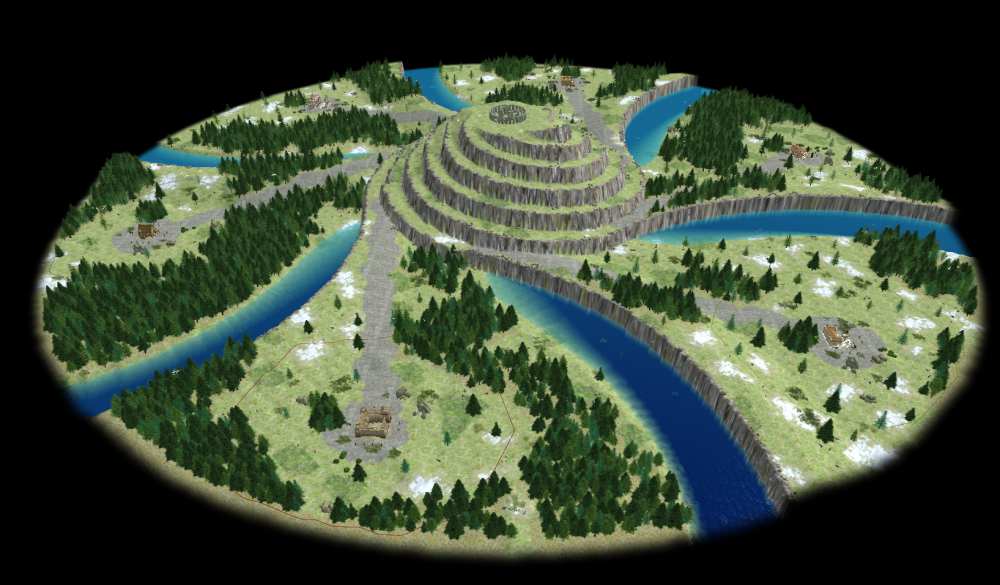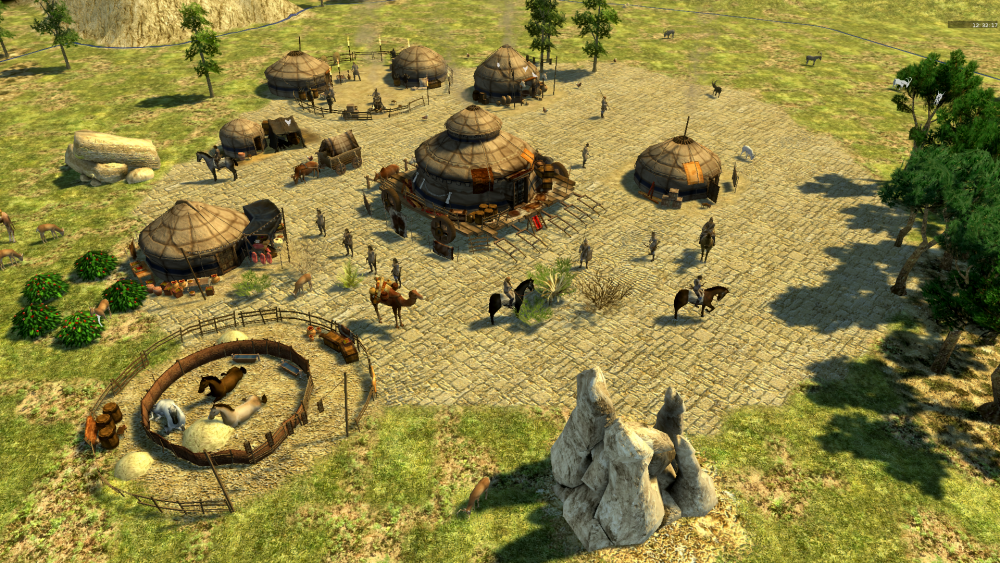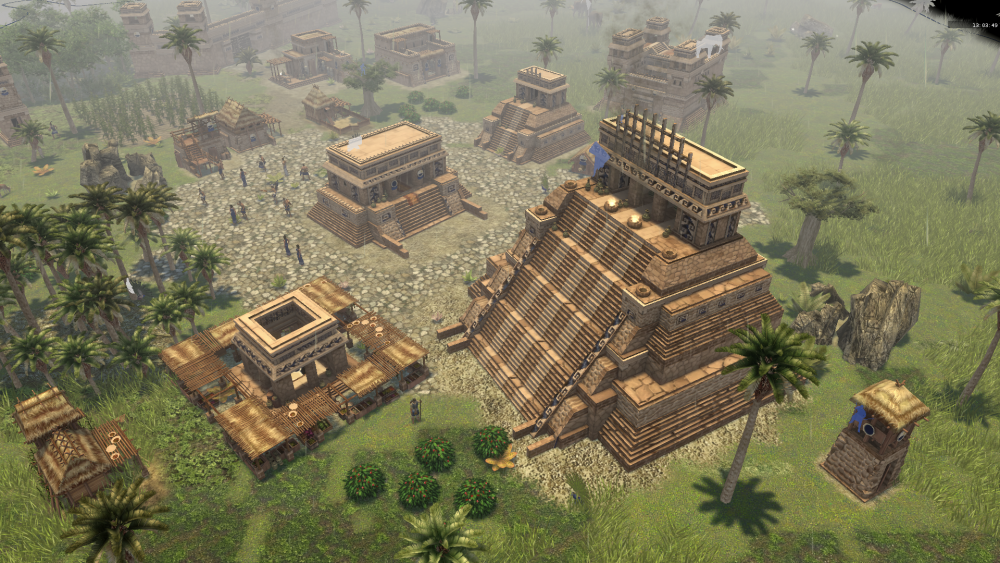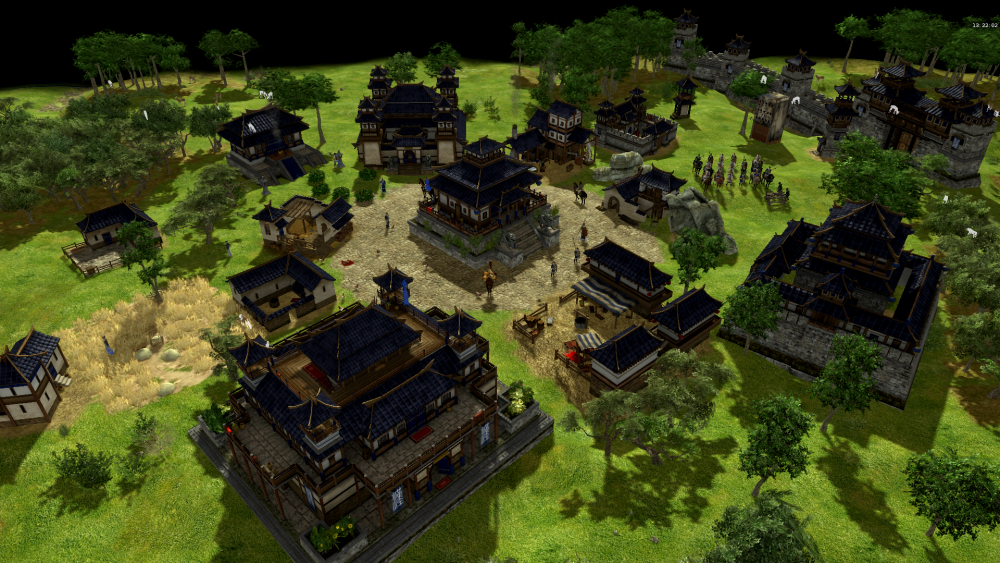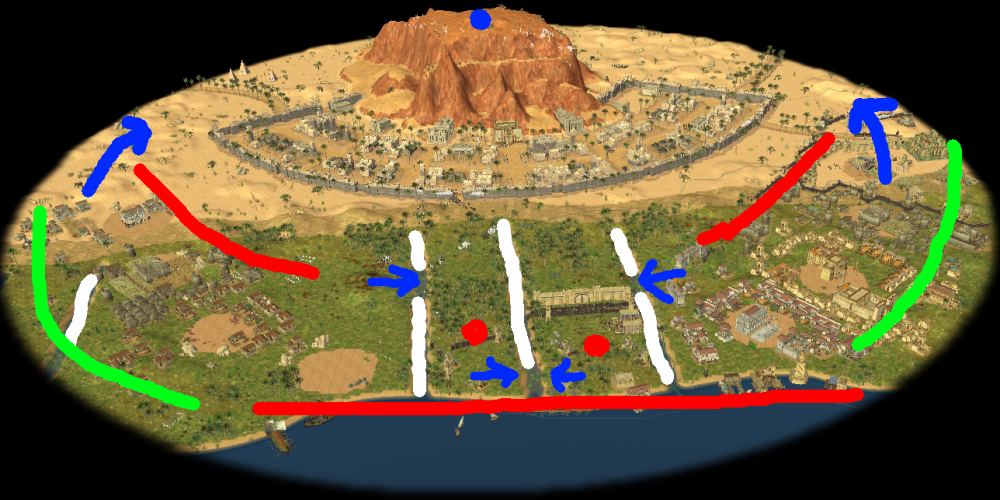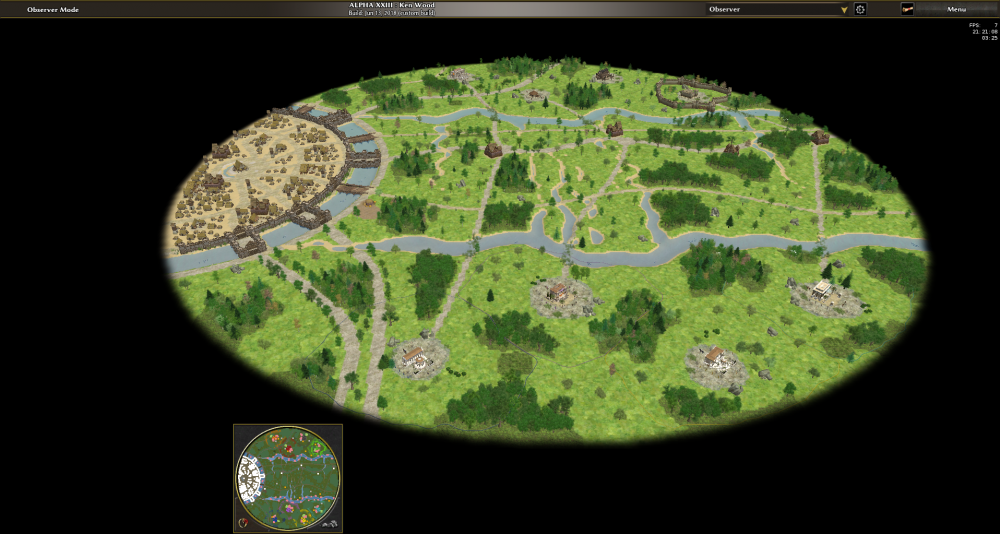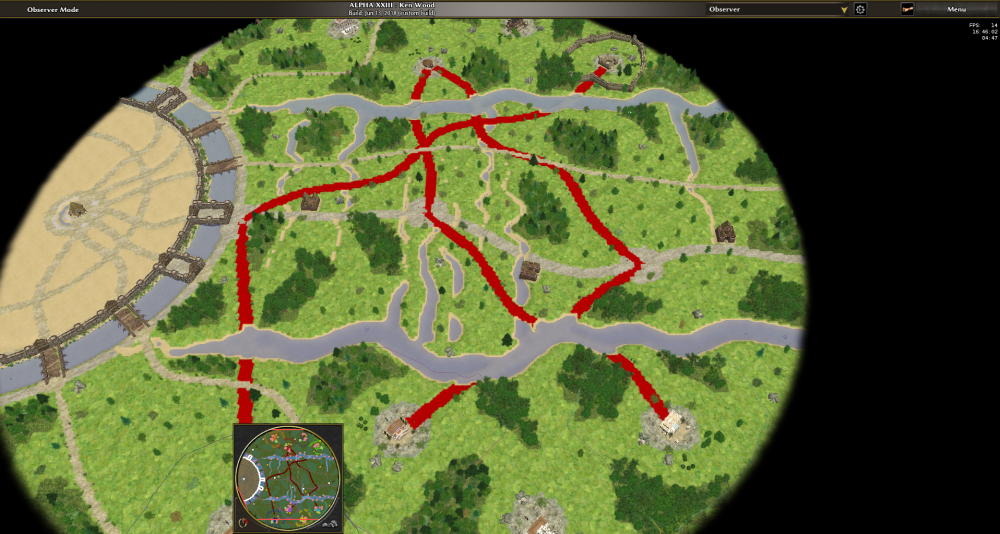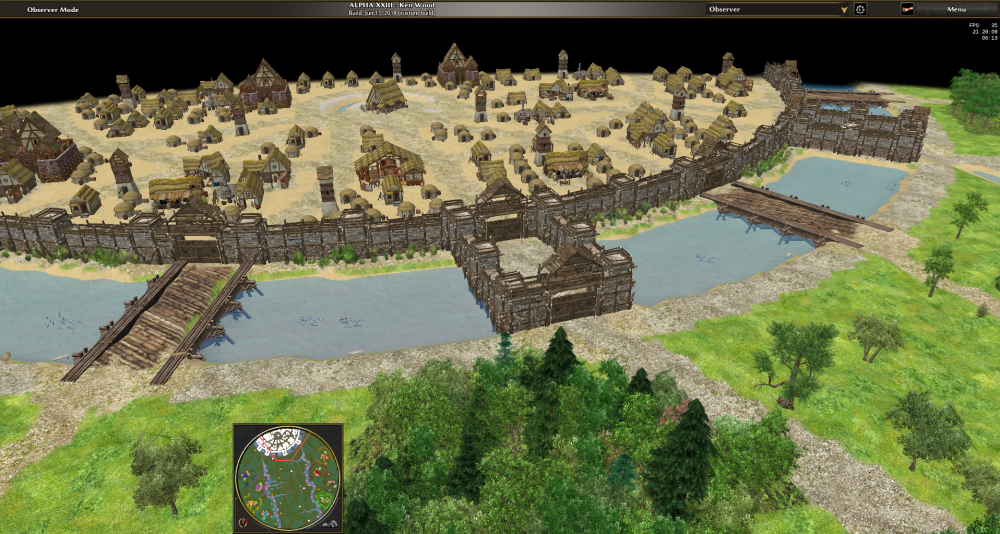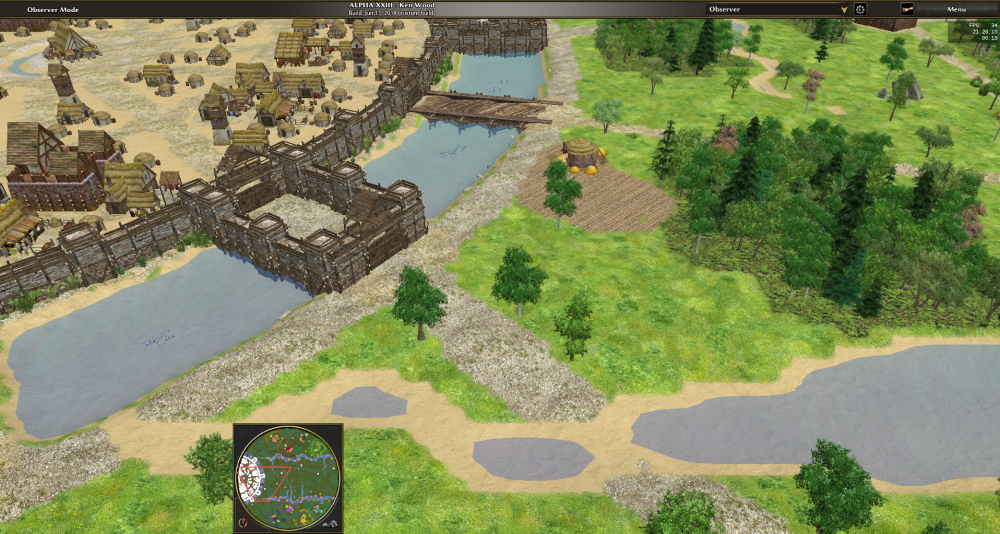Leaderboard
Popular Content
Showing content with the highest reputation on 2018-07-10 in all areas
-
7 points
-
Sup community, sharing random map King of the Hill's style I made for the kicks. You must place the 3 files under "username/Documents/My Games/0ad/mods/public/maps/random" Hope you try it out. I will be in lobby, ping me! Read suggestions. Added paths. Less wood and fish. Updated. I think I will not touch it anymore. Maybe clean the code. Thanks @elexis for guided tour. DOWNLOAD FILE: nani_maps_v0.10.0.pyromod2 points
-
@elexis, may I invite you to check out the following posts with specifics about Gallic architecture including a bunch of relatively accurate artists' representations of oppida (except the parisii one, which is apparently a bit of a fraudulent imagination) ditches are a definite yes. Even several circles of ditches was a thing. Perhaps with pikes. Wether they had water in them or not, I can't say. Probably mostly not, seen as they were usually built on an elevation. Fortified gateways similar to the one you made can be found at Manching and Bibracte, although there's usually only one gate-house, set back, with the walls extending in front of it, but not as far. Gauls definitely built bridges (Vercingetorix breaking up bridges to slow the advance of Caesar). Not sure what they looked like though... Wood, probably. Celts apparently used wooden planks for some of their roads. Some of the oppida, like Entrement had paved roads of stone (irregular shaped stones). There was a lot of variety in oppida and level of sophistication. The more "advanced" ones definitely had an urban/proto-urban character. The oppidum of San Cabran (Celtic Castro Culture, Iberia) had both stone paved roads and a radially symmetric shape and a central walled "acropolis". It also had cute little stone round huts. Oppida were indeed usually built on top of a hill.. Not exclusively, but the more substantial ones mostly were. I love the map so far, and I'm curious to see where you take it... Good Luck and Vim! .2 points
-
@Splizard https://github.com/0ad/0ad/blob/master/binaries/system/readme.txt2 points
-
Saying that Parthia is a Hellenistic state is misleading. They conquered a Hellenistic Empire where Greek language and culture was wide-spread (but not at all universal), yes, but the Parthians were Iranians and were responsible for the Iranian Revival, which is very significant. Sure the early rulers described themselves as philhellenes, but they were Iranian, very similar to Persians, and looked distinctly Middle Eastern in most respects. I'm very excited about Zapotecs, and other pre-Columbian civs ! They're just their own kind of thing, so they don't integrate well with the other vanilla-civs (geography, stone vs iron, no horses or powerful navy), so they should be a stand-alone expansion. I'd love to play it a lot though It's pretty obvious why Sparta and Athens are stand alone civs. No need to argue about that. I get a bit tired of Hellenocentrism, but I'm not totally opposed to other Greek civs, only if more non-Greek civs are added as well. But the focus should really be on the more important civs across Afro-Eurasia in my opinion. Who said we should go into the Bronze Age for part 1? I think everybody agrees to keep it purely Iron Age... The question is should we cut Iron-Age Antiquity in half and throw away the beginning and end of it, as if they are some sort of unwanted appendages? They obviously don't belong in the Bronze Age or the Medieval Age either. Those few Iron Age centuries before and after 0AD's current time-frame are just too silly to represent in their own 2 mods. From c. 8th century BC to 5th century AD is all Iron Age Antiquity (across the Old world) and forms a cultural, technological and to a degree even political continuum (in general terms of course)... Bronze Age is for the prequel, indeed. Yes! If you want a specific date like March 15, 44 BC, then yes, it would always be totally arbitrary. But defining a specific date like that for game with such diversity in civs is nonsensical in my opinion to begin with. That's my whole point! That's why I advocate following actual historical periods, which are important across the Old World, and have varying specific dates depending on the geography you're discussing. Major historical periods are absolutely not arbitrary, and are not defined by the death of a single individual in a single civilization. Bronze Age Antiquity, Iron Age Antiquity and the Medieval Period are the three periods that make sense for a game like this. Don't define specific dates for the cut off points. Only use the general period. Anything else is going to be unnecessarily awkward. Create some leeway for yourself. It will help with the historicity of the game to be able to portray the rise and fall of the majority of civilizations, rather than cut most civs in half, because, reasons... Also, the arbitrary 500 year increments for the different parts of 0AD not only put considerable and awkward restraints on referencing, they could easily result in 6 different games (1500 BC - 1500 AD), meanwhile the development team is struggling with part 1. The 3 periods: Bronze Age Antiquity, Iron Age Antiquity and the Medieval Period are far more feasible and way easier in terms of referencing. Yes, yes, yes... Exactly... Those are "Barbarian" civs. There's an obvious difference. They never established empires... I don't think anybody wants that... Spartans and Athenians are super-duper iconic... And there's lots of research on them, so referencing is a breeze. Further differentiating Gallic factions seems like a referencing nightmare! Also, what's the point of developing 8 new factions, all of which are exceedingly similar to each-other while work on other world-powers like Scythians hasn't even begun yet?2 points
-
I think this is an artificial "problem." Athens and Sparta are the Hellenic states most interesting to players, so that's why they are included. Honestly, I wouldn't mind adding the Argives and Corinthians and Syracusans too. But for real though, some can be Atlas-only civs for scenarios and campaigns (Peloponnesian War). It would be easy to add them. While Athens and Sparta remain the selectable Greek civs.2 points
-
2 points
-
2 points
-
This thread will be used to document the development of the new mapgeneration script that should become a proper successor of Danubius and Jebel Barkal, i.e. a procedurally generated scenario map for arbitrary amounts of players, mapsizes with a scripted opposing city with fortifications depending on a difficulty setting. The theme of the map are the forests of Gaul, the opposing enemy village is an Oppidum again. Map Design The design is the most decisive step during feature development. I start with the terrain design and show how it shapes gameplay. Since the primary aim is to create a better map than Jebel Barkal, I first analyzed what made Jebel Barkal a success. You might want to take a look at the Jebel Barkal - Illustrated Walkthrough in case you are not familiar with this map yet. The below sketch displays: red: fights (location where fights occur frequently) green: trade (location where fights rarely occur, that are safe for women and trade carts) blue: expansion (locations that are feasible to build new bases at or expand the current base progessively) white: barriers (here irrigation canals that allows quick and effective walls) We record and evaluate the observations about the map design: Most maps are circularly symmetrical, which makes them one-dimensional and so the gameplay becomes one-dimensional as well. Most maps consist of a random composition of natural resources, trees, lakes and hills. This means there is no information, no meaning, in the terrain, no essence, nothing shaped by man, no points of interest. On Jebel Barkal, there are four distinct areas with a unqiue biome and different meanings / use cases for players to reside there. Water: Low Risk / High Reward Fish is faster income than fields Collect wood remotely in a safe location Transporting siege engines quickly and directly to the enemy base Survival on the water after being wiped out on the land Fertile Land Low-Risk/Low-Reward: The only location with feasible amounts of wood, even abundance Farthest distance to the opposing city Irrigation canals allow easy walling. Allies very close by to help out quickly and effectively. No mines and few space to build, one has to build up trade or expand. Desert: High-Risk/High-Reward Very attractive as mines occur in abundance and other places don't have mines at all Very unattractive because the occupying units are dislocated, there are no natural barriers, no wood, no neighbors. So the location is an easy target for the opposing city, hard to defend and maintain. Hill: High-Risk/High-Reward: Conditional Use: Since the hill is heavily defended an since the home base is usually already established, the hill can only be captured in games that last long enough for one player to be lose the entire home base, but have enough of an army left over to wipe out the large number of troops on the hill. It can and does occur in Diplomacy games more often than in team games. Once the mountain is conquered, one can pickup treasures and build a base that is extremely easy to defend. The city in the center of Jebel Barkal is the most significant difference to every other map due to the following gameplay design traits: Balancing factor: Military buildings spawn different attackers per building, so there is proportional reward for the player to take out individual buildings. Surprise factor: The city is composed of different buildings every time. Eyecandy factor: Since the city is not created by a player after the gamestart but at map generation time, the terrain can be changed in accordance with the city, i.e. there are different ground textures in the city and for paths, there are trees and ditches. This is currently the only way to show how men shaped their environment and makes everything appear much more naturally, resemble actual cities or villages. Problems of the Alpha 23 Jebel Barkal map (see also #5150): There is no victory condition or other sufficient incentive to invade the city on Jebel Barkal. Players have to play with the general Conquest and other conditions. So it is economically much more feasible to destroy the multiplayer enemy rather than the opposing city. We see the city only being taken out in rare diplomacy games where one player claimed the hill. Balancing is hard and has to be derived experimentally. Examples: Hardly varying Soldier count is by far not as relevant as Elephant/Siege Engine count varying drastically. It should not depend on map generation (randomly 0 to 10 elephant stables on a normal sized map). Lag: Since there are much more buildings and gaia units around (up to 8 * 150). Formations make it quicker, but can also have separate problems, especially pathfinding ones. In the next post I will show an idea I had after the above analysis and set aim.1 point
-
Hello, I'm trying to experiment with the AI. I made a folder inside the mods folder and basically copied Petra and changed one or two lines. It works ok when I open the mod via the UI, but I'm trying to launch a match directly using the mod via terminal. I tried: pyrogenesis -mod=mymod -autostart="random/mainland" -autostart-seed=-1 -autostart-players=2 -autostart-civ=1:athen -autostart-civ=2:brit -autostart-ai=1:pedra -autostart-ai=2:pedra -autostart-player=-1 Instead of opening the match (as it does without the -mod=mymod part) it just goes to the mod settings screen. Am I doing something wrong? Any help is welcome.1 point
-
Please don't go into the Bronze Age. Let mods or a prequel do that. I do like the idea of making 0 A.D. traverse the totality of the (Western) Roman state, or the breadth of "Classical" times. So, going ahead and extending it to the "Fall of Rome", 5th century, would be fine by me. Allows for cool civs like Sassanids. And then making "Part 2" being about the Middle Ages is also cool. It mirrors the Age of Empires franchise (homage), but with all the new and different features the 0 A.D. franchise still stands on its own. But if you still want to have Part 1 and Part 2 being (roughly) the 500 years BC and 500 years AD (any date you set is arbitrary, IMHO @Sundiata, so I don't think this is so bad. If 1AD is too arbitrary a date for you, then perhaps choose the murder of Caesar or the ascension of Augustus as your mid-point, still close enough to 1AD to make it not really matter), then I think Parthians for Part 1 are a must. They are really not a Part 2 civ. Their successors, Sassanids definitely are a part 2 civ. Others would be very desirable for Part 1, in order: Han Chinese, Scythians and Xiongnu (these 2 to tie Eurasia together), Odrysian Thracians (because they're cool), Epirotes. And a few others would be "nice to have", such as Pontus, Nabataeans (pretty cool), Armenians. Heck, to promote the mod.io feature, many of these could be offered as "official mods" folks can pick and choose to add to their game's civ roster.1 point
-
Uff ...have years without an update. Without a gameplay team or department we are just cloning civs.1 point
-
1 point
-
1 point
-
Was expecting these stuff in Aristeia too. Too bad the project has been in a very long hiatus.1 point
-
I remember the editor of Warcraft III allowing you to scale animated units though. There was a parameter you could set like "scale", just one number, and the corresponding unit would be scalled correctly in proportion.1 point
-
Step 9: Some of the bridges become fortified gates. At the wooden bridges small paths start, at the fortified gates, larger roads lead away from the city. Bushes are added to the walls. Step 10: Fortresses near roads are added to try to address the balancing problem that all scripted opponents would only attack the 2-4 players closest to the city. We observe a big balancing problem with the random paths. Step 11: To connect all of the players with the central strip, player paths are added to random places on the road. It's the places where the shallows going to be. It becomes evident that one of the concerns that is visible in the very first design sketch will turn out to be a severe balancing problem: The shallows can be walled off easily, then all scripted enemies will take the path through the left side instead of attepting to destroy the walls; i.e. the players on the left get's all scripted enemies, the players on the right side none. This means either the map design must fundamentally change (for instance making the entire stream passable), or the scripted enemy must be ordered to destroy the closest buildings instead of trying to reach a point behind that obstacle (sucks to create a different bot strategy for every map) Step 12: Adding farmland and farmsteads near the ditches to make the city more vivid and realistic.1 point
-
Hi All, just a quick update. I've spent the last week doing some field recording (forests, streams & rivers, waterfalls, weapons, etc.) while on holiday here in New England. I even managed to track down some chickens and some draft horses to record! I now have about 5 GB of audio to ingest, clean up, and cut up, which should keep me busy for a few weeks/months. I also have plans to go and get some new shore sounds hopefully around the end of the month too. Obviously this will be a slow, ongoing recording project, but I just figured I'd let you know what I've been up to so you don't think I just ran off. As I get things cut up and processed, I'd like to figure out a way to share them with you all before integrating them into the game. It's a bit too many files to upload individually to a site like Instaudio, so I was thinking about putting them in a dropbox. Here are a few environments that I can't gather myself without great personal expense- Desert Jungle Mediterranean If someone who lives in one of those climates is interested in the task (it requires being in or going to a rural enough location where you can find a spot without audible automobile traffic), I am happy to provide instructions and suggest very affordable equipment that can do the job well enough.1 point

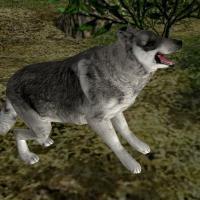

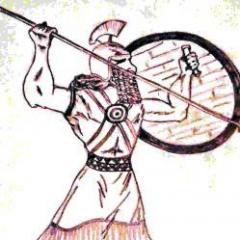
.thumb.png.ce58cea22940c255f5b0a735d5abee36.png)
